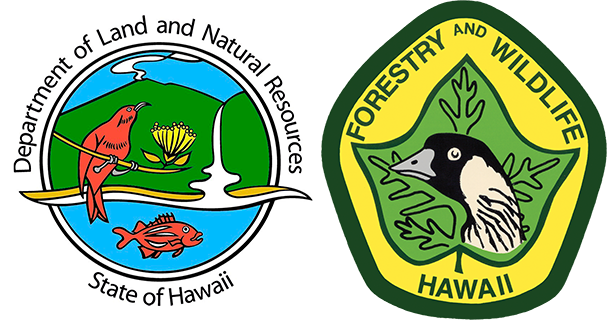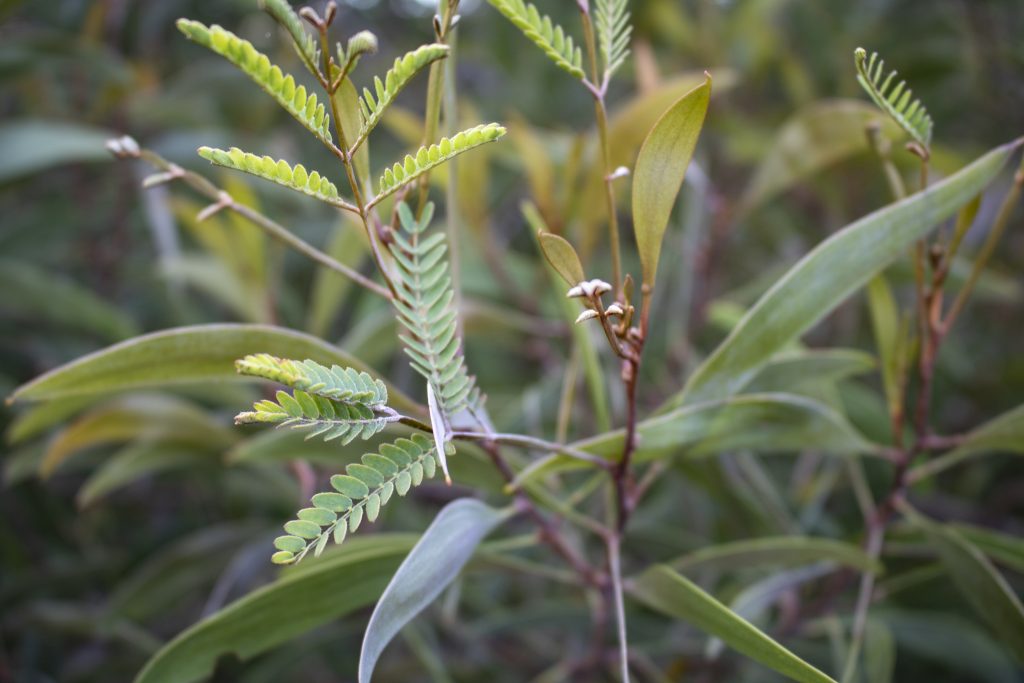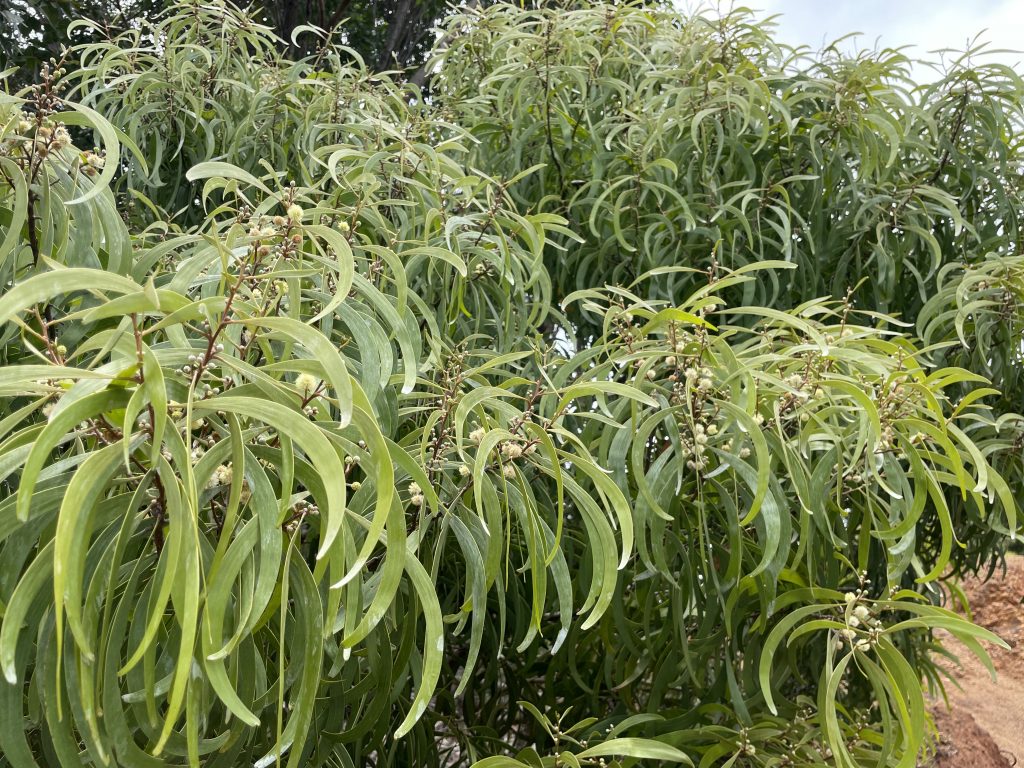Koa
Names
- ʻŌlelo Hawaiʻi: Koa
- Scientific: Acacia koa
Conservation Status
- NatureServe Heritage Rank G4 – Apparently Secure
Species Information
The koa tree is endemic to Hawai’i and can be found on all the main islands except Kaho’olawe and Ni’ihau. Koa is the largest native tree species in the Hawaiian islands, reaching heights of approximately 35 m (115 ft). Koa is a member of the family Leguminoseae, subfamily mimosoideae, genus Acacia, subgenus Phyllodineae (Baker et al., 2009). As a juvenile, koa has compound leaves composed of many tiny leaflets. As koa matures, it produces phyllodes instead of true leaves. Phyllodes are flattened, sickle-shaped, leaf-like structures (Baker et al., 2009). Historically, Koa wood was used by early Hawaiians to build ocean-going canoes, surfboards, spear handles, and ukuleles. Koa was considered the wood of Hawaiian royalty. Today, Koa is one of the most valuable hardwoods in the world.
Distribution
Koa is found on all the main Hawaiian islands except Kaho’olawe and Ni’ihau. Today the greatest concentrations of koa are found at elevations between 915 and 1830 m (3,000 and 6,000 ft) (Baker et al., 2009).
Habitat
Koa is found at elevations ranging from sea level to more than 1830 m (6,000 ft), across a broad range of climates, from dry to wet. It is not found in Hawaii’s wettest forests. Koa is intolerant of shade, growing best in large clearings. In the open, it is capable of using about 60 percent of the available sunlight on a cloud-free day (Baker et al., 2009).
Threats
- Insects
- Diseases
- Alien species
Plans & Projects
References & Additional Resources
Baker, Patrick J, et al. US Forest Service, 2009, Koa (Acacia Koa) Ecology and Silviculture, https://www.fs.fed.us/psw/publications/documents/psw_gtr211/psw_gtr211.pdf.




